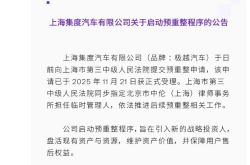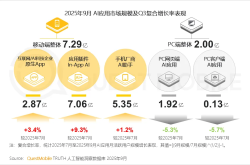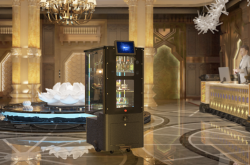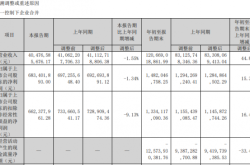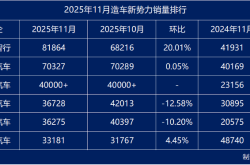Are Orders for Humanoid Robots Skyrocketing?
![]() 05/12 2025
05/12 2025
![]() 579
579
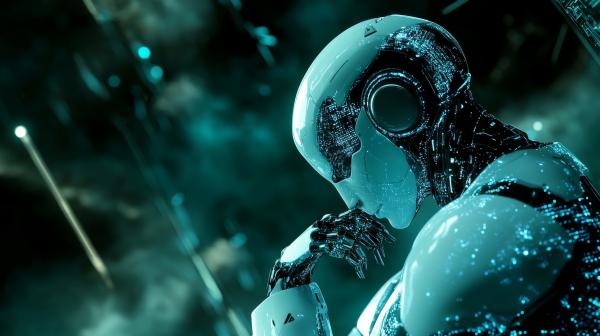
At the recently concluded Shanghai Innovation and Entrepreneurship Youth Top 50 Forum, Wang Xingxing disclosed that, fueled by the market buzz surrounding humanoid robots and the attention garnered by national policies, the growth trajectory of humanoid robot enterprises, Unitree among them, is robust. "Orders for many enterprises have surged significantly."
However, it cannot be denied that the robotics landscape is becoming increasingly crowded.
Huawei ventured into the realm of humanoid robots long ago, Unitree robots captivated audiences during the Spring Festival Gala, and giants such as Tesla and BYD have also set their sights on this burgeoning sector.
From Boston Dynamics to Honda, OpenAI, and Microsoft, with the dawn of the generative AI era, a fresh wave of competition in robotics has commenced.
Robots are composed of three pivotal technical modules: motion modules, sensor modules, and artificial intelligence modules. For conventional robots, often just one of these technologies is required to be functional. For instance, industrial robots primarily focus on motion control technology, while cleaning robots emphasize navigation and sensing technology.
Humanoid robots, on the other hand, must be versatile across various application scenarios rather than confined to a single task in a specific context. This makes them significantly more complex, necessitating higher levels of technology integration and fusion, the modeling of larger datasets, and a stronger comprehension of language and instructions. Prior to this, AI data and models were generally developed in isolation, resulting in slow iteration speeds and high costs.
The rise of large models has drastically altered this scenario.
In just a few years, the number of parameters in models has leapt from billions to quadrillions. Consequently, large models are evolving from single-modal large models, such as text, speech, and vision, to general AI with multi-modal fusion. This enables the direct integration of speech, vision, decision-making, control, and other technologies with humanoid robots, comprehensively enhancing their functional capabilities.
In April 2023, AI company Levatas collaborated with Boston Dynamics to integrate ChatGPT and Google's speech synthesis technology into the Spot robot dog, successfully enabling human interaction.
The rapid evolution of underlying technologies has demonstrated the potential for large-scale commercialization of humanoid robots, and major global technology companies are actively making attempts and preparations. However, based on the current situation, humanoid robots still have a considerable journey ahead before they can truly become a fixture in thousands of households.
Firstly, the capabilities of humanoid robots currently available in the market are still relatively limited and lack substitution benefits.
For instance, household service humanoid robots do not yet possess the ability to fully replace existing human daily services; similarly, humanoid robots used for commercial guidance and reception can only answer some straightforward questions and cannot address all customer inquiries.
Due to this lack of robust substitution, humanoid robots are still not very appealing to C-end consumers.
It is also evident from the product positioning of participants that the current primary focus is still on exploring B-end scenarios. For example, Tesla Bot's first batch of mass-produced robots will likely be deployed in super factories; UBTECH's emphasis is also on exploring the application of humanoid robots in related industrial scenarios such as new energy vehicles and 3C electronics in collaboration with enterprises.
Secondly, many shortcomings in foundational technologies have yet to be addressed. For instance, the battery of a robot needs to support continuous operation for up to 20 hours, but most humanoid robots currently operate for less than 2 hours. Another example is the cost, which easily reaches tens of thousands of dollars, a price that obviously cannot be widely adopted. Manufacturing costs need to be reduced by 15%-20% annually in the future.
Humanoid robots may not be a lucrative business within the next three years, but within the next three decades, it is an industry that cannot be ignored. Starting from the industry's fundamental principle, the value of humanoid robots lies in replacing high-cost labor, an event with a high degree of certainty.
As for current technical and cost issues, they are not long-term problems.
Taking cost as an example, as long as continuous commercialization can be achieved, any new technology and product will transition from high prices to affordable ones, much like computers, smartphones, electric vehicles, etc. In the past, the cost of a single humanoid robot such as Honda's ASIMO and Boston Dynamics' Atlas was as high as $3 million and $1.9 million, respectively. Now Tesla can achieve it for $20,000, and it will surely decline further in the future.
Technology follows a similar trajectory, continually iterating and upgrading. Due to the immaturity of lithium battery technology, when Boston Dynamics launched the first-generation humanoid robot Atlas in 2013, it still required wired power, but when the second-generation Atlas was launched in 2016, it utilized independent lithium batteries.
Musk predicts that the long-term demand for humanoid robots will reach 10 billion units. Even if only one-tenth of this expectation is ultimately met, the industrial space will still be an astonishingly large number.
With the largest population and manufacturing industry, China is already the world's largest consumer market for robots, with robust demand anticipated in both B-end and C-end segments in the future. Furthermore, China has not lagged too far behind in software and hardware technologies in the robotics field. The combination of these two factors fundamentally determines that China harbors great hopes for fostering a group of robot companies that can firmly establish themselves on the global stage.
Currently, the leading humanoid robot enterprises in China are UBTECH and CloudMinds, founded in 2012 and 2015, respectively. Based on the current landscape, compared to UBTECH and CloudMinds, the humanoid robot enterprises that are likely to truly emerge in China in the future will be major companies such as Xiaomi and ByteDance. Whether it's talent, capital, market, or brand, large companies possess obvious advantages. Moreover, although companies like UBTECH started earlier, they have not accumulated a strong leading edge. UBTECH's revenue share from humanoid robots is currently in the single digits.
The visibility and profitability of the upstream sector are much stronger. Analyzing the material costs of robots, reducers, servos, and controllers account for 35%, 20%, and 15% of the cost of industrial robots, respectively, totaling 70%. Considering that humanoid robots have more joints and degrees of freedom, the proportion of these components may be even higher.
The reducer field boasts many players, with Greatoo, Leadshine, Tongchuan Technology, Zhongdalide, Guomao, etc., all possessing certain production capacities. However, there is only one clear leader: Leadshine. The company has established a virtuous development cycle of "R&D - expansion - profit - re-R&D and re-expansion." As a manufacturing enterprise, Leadshine has achieved a net profit rate of over 30%, which is no mean feat.
The class differentiation in the servo motor field is relatively pronounced. High-end capacity is predominantly held by foreign companies such as Mitsubishi, Yaskawa, Fanuc, and Siemens from Japan. Inovence, Jiangte Motor, Jiangsu Leili, Leadshine, Haozhi Electromechanical, etc., are concentrated in the low-end segment, with Inovence as the absolute leader. In 2022, Inovence's market share in the domestic servo field reached 21.5%, an increase of 5 percentage points compared to 2021. With the substitution of domestic products and the increase in robot volume, Inovence's potential expectations are also relatively high.
In the controller field, domestic controller enterprises are highly fragmented. Although there are a number of professional controller enterprises such as Canoo, Wanxun Automatic Control, Gootech, Invt, and Haide Control, they have not yet forged effective market competitiveness. The current localization rate is less than 20%, and whether they can emerge in the future remains to be seen.
In the long run, humanoid robots are a promising venture that will eventually flourish. Short-term hype holds little significance; what is needed is long-term tracking and attention to identify those key enterprises.
Disclaimer
This article involves the content of listed companies and is based on the author's personal analysis and judgment derived from information disclosed by listed companies in accordance with their legal obligations (including but not limited to temporary announcements, periodic reports, and official interaction platforms, etc.). The information or opinions presented in the article do not constitute any investment or other business advice. Market Value Observation does not assume any responsibility for any actions taken as a result of adopting this article.
——END——


